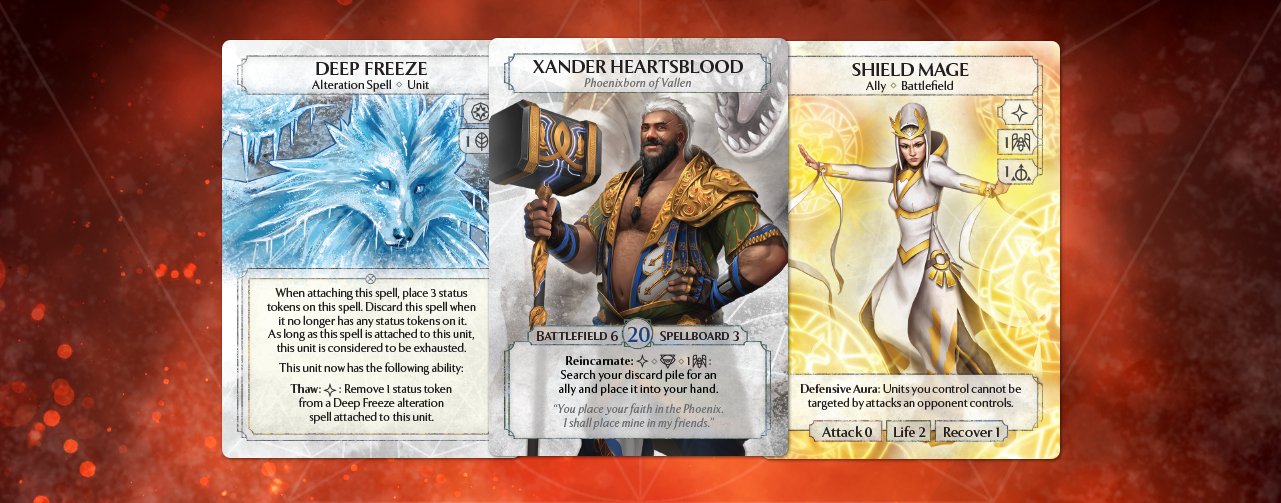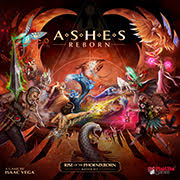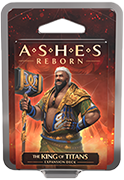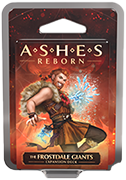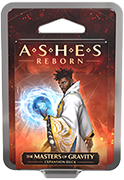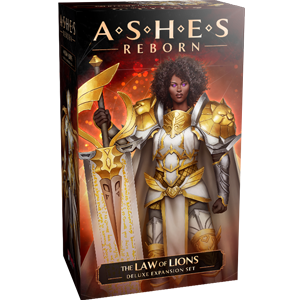Re-Constructed Decks - Xander
Cold Blooded Hotness
Welcome back, Ashes players, to another installment of Re-Constructed. Today, we’re gonna teach you how to ride a dinosaur. Don’t be nervous, you got this.
By this point, you should already know the deck building restrictions we’re working with, and with these divine and sympathy magic decks you’ll also need “The Law of Lions'' or “The Song of Soaksend” accordingly. We’ve covered a few beefy unit decks in the past, like Rin, Maeoni, Odette, and arguably Echo, and today’s deck hits the floor with a similarly sized footprint. Except, you know, this one was made by a big fat lizard, and similar to Maeoni’s precon doesn’t actually need much adjusting despite all the ways we’re going to nudge it.
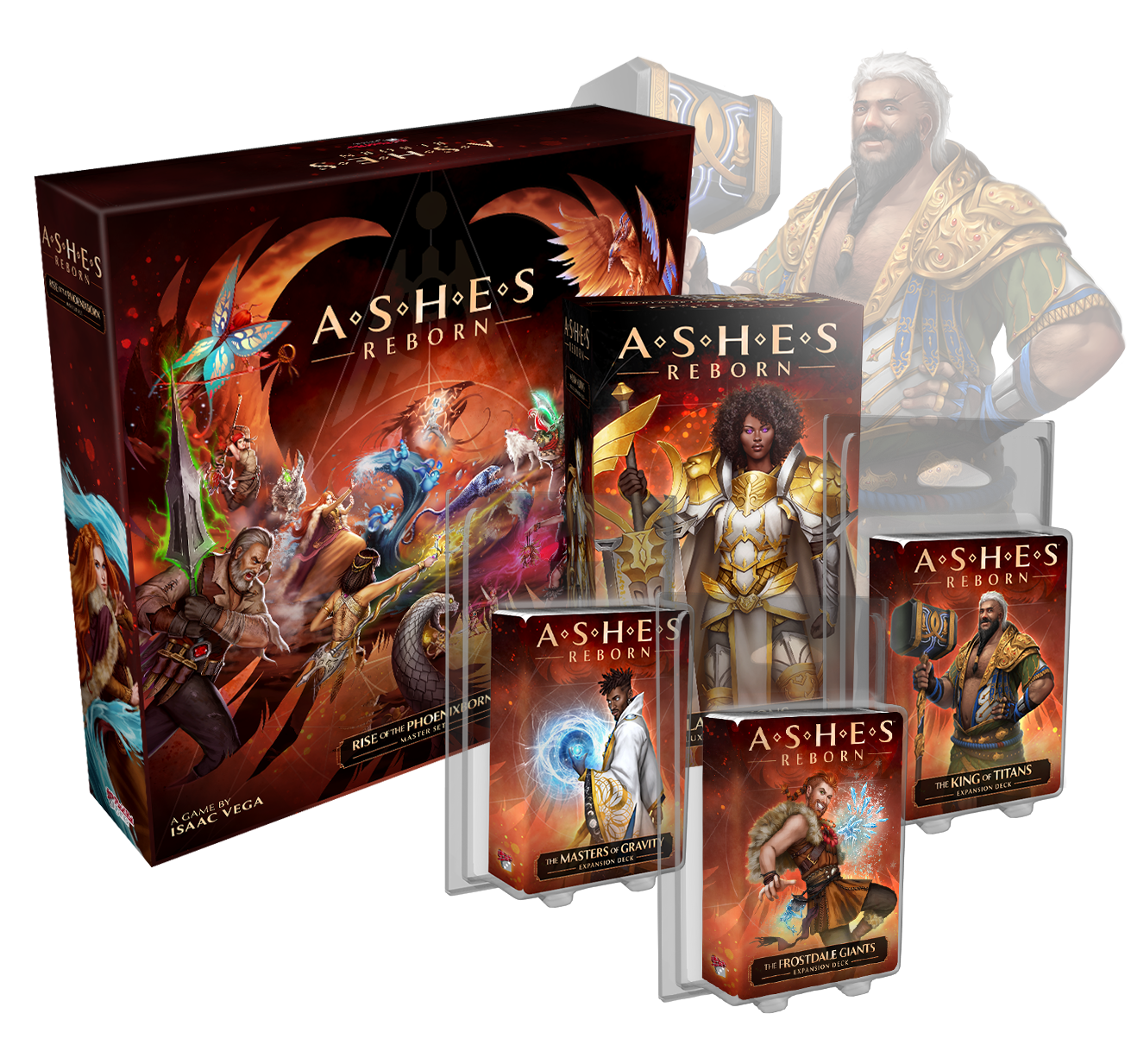
The Keeper of Titans (Re-Xander)
Re-Constructed by Andrew DiLullo
4 Divine, 6 Natural // Required Sets: The Frostdale Giants, The Masters of Gravity
1x Summon Cerasaurus Mount
1x Summon Frostback Bear
2x Sacred Ground
1x Close Combat
3x Earthquake
3x Nature’s Wrath
2x Enlightenment
2x Mass Heal
1x Summon Archasaurus Mount
2x Summon Shining Hydra
2x Pain Shaman
1x Polarity Mage
3x Raptor Herder
1x Shield Mage
2x Deep Freeze
1x Massive Growth
2x Root Armor
Despite all the new content here the deck still remains fairly prehistoric, which seems to be a recurring staple of these meaty midrange natural decks. Maeoni retained her massive snake gameplan even with the Frost Bite inclusion, Koji’s Creeper farming didn’t exactly lose any definition by adding Squall Stallion or Guilt Link, and even with Iron Rhinos and a surprising amount of technical inclusions, the Rin deck is still very much “bears and golems go brrr.” This doesn’t mean these decks aren’t tactical or tactile in their own way, just that the gameplan behind the decks is already so well equipped that it seems unnecessary to alter their DNA. That being said, the idiosyncratic approach each of those decks take for the same idea is fascinating: Maeoni is all about developing one unconquerable threat, Rin is about steady advantage through good trades and big stats, and Koji is a bit more of a combo engine wearing midrange skin. Xander stands out by being the deck that creates units that endure his repeated battlefield blowout tactics and mass removal, either by being huge, employing powerful self recovery, or by riding a dinosaur.
Just about the entirety of Xander’s precon is still here in some form. Cerasaurus Mount is still our primary conjuration and Xander’s Reincarnate will guarantee that we always have an ally to ride the saddle. Board still goes boom via Nature’s Wrath and Earthquake constantly ruining the floor, and the new Sacred Ground ensures that our units will survive the fallout every time. Pain Shamans and Raptor Herders make excellent mounting allies with their enter play abilities, Mass Heal keeps our board somewhat healthy, and we still have Hydras and Archasaurus to make our opponent sweat. The only card absent this time is Law of Domination, which is still great in this version as a solo copy (we’ll talk about it during swaps). At its heart, Xander’s deck is still all about dropping solid allies that turn into massive dinosaur-powered threats, with a gameplan to win through upward exchanges and offensive abilities that force a win over time (Gigantic, Terrifying, and Overkill).
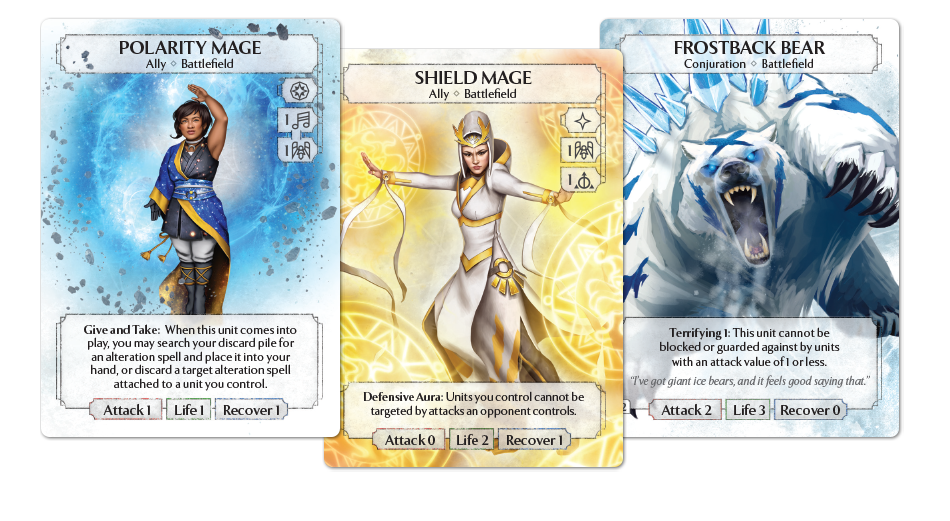
Now let’s talk about what we’ve added. First, we’ve got some mages that can both help fill our battlefield of six more easily, while solving some unique problems. Polarity Mage can be especially useful against other midrange decks running their own alterations (especially other divine magic or natural magic opponents), but can also be used to retrieve tools like Root Armor, Deep Freeze, or even our single Massive Growth from the discard. Meanwhile, Shield Mage gives us a clever way to work around our current lack of unit guard. While we’re only running one copy of each, Xander’s Reincarnate will allow us to keep these threats persistent if we so choose (and we can mount them to keep them safe if we want). Additionally, we’ve added Frostback Bears as a more reliable summon that doesn’t require ally presence ahead of time, and has the advantage of continuing the deck’s theme of offensive abilities with its own batch of Terrifying.
There’s not too much more to talk about in terms of the general layout (it’s fairly straightforward), so I’d rather focus on a few strategic considerations that should help evolve this deck past its primitive play patterns. Nature’s Wrath and Earthquake are both extraordinarily powerful disruption tools, and obviously you want to use Sacred Ground before playing them to not also deal damage to your own units...right? Well, it’s not always intuitive, but sometimes self damage is good. How else will you reliably feed your Shining Hydra? What if you need to kill off one of your mounts to retrieve the ally underneath? Heck, maybe you just need to destroy your own ally so you can Reincarnate it and play it again fresh. While the bones of this big unit deck fit together simply, there’s a lot of complicated muscle driving them. Make sure to consider the state of the board, the cards in your hand, and even the cards in your discard when deciding how to use your valuable mass damage cards.
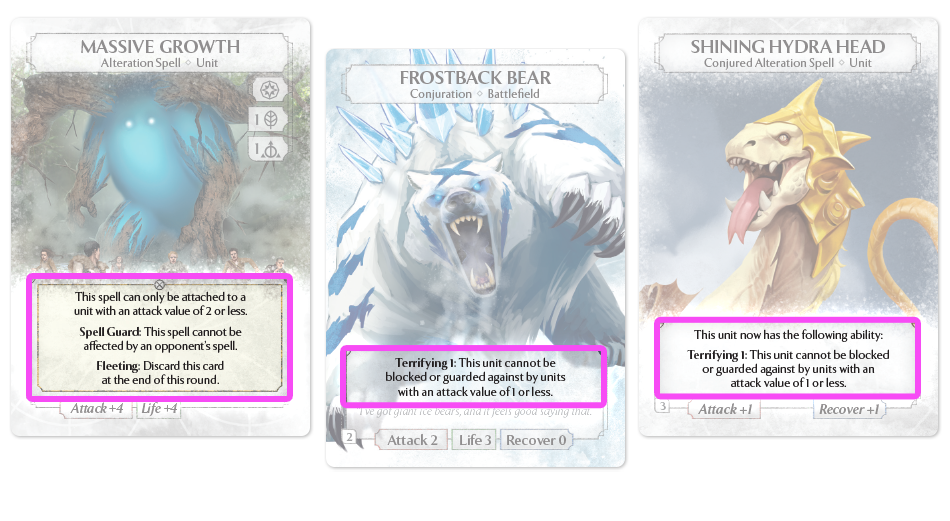
Here are a couple more hunting tips. First, Massive Growth is actually more powerful than it might initially appear, and also more situational on average. The big bonus is intended to be a closer, usually by attaching it to a unit with Terrifying or Gigantic. While this can be strong, it can also be answered by a variety of reactions that you will need to bait out earlier in the game (Redirect, Figures in the Fog, Strange Copy, and Outmatch come to mind). To that end, pay attention to your opponent’s dice pool, and especially be mindful of power symbols on their side of the board before committing for a big swing.
Second, Deep Freeze may seem like a weird card to include here, but in a deck with such heavy hitters it can actually be quite deadly. Freeze a monster down to create an opening to attack their Phoenixborn, or make a unit vulnerable to a Cerasaurus strike. Sure, they can guard the attack once, but can they guard it multiple times in a row? Deep Freeze lasts a minimum of 3 turns, and that’s assuming your opponent is willing to throw away all their side actions. It can even be used defensively, possibly stopping an opponent’s blowout turn like a giant Silver Snake about to Hypnotize your face off.
Lastly, when facing an exhaustion deck, don’t forget that Xander’s ability can be used defensively to steadily refill your hand, forcing you to draw fewer cards over the course of the game. While that may seem counterintuitive, it can drastically slow down your opponent’s exhaustion win condition if used properly, and your spellboard and allies should be fairly effective without needing an excess of card draw. I suppose the more universal advice is to keep your mind open to how cards can be used outside of their most obvious application; it can be a useful way to surprise an opponent that thinks they’ve got you figured out.
First Five:
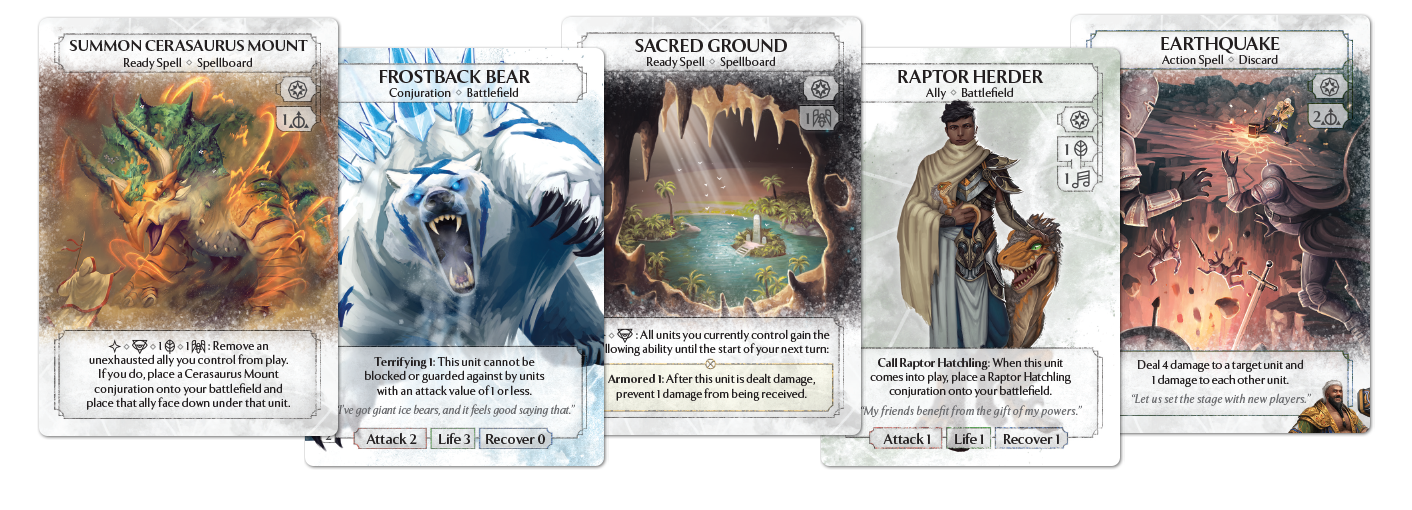
Your hand should be both summon books, at least one ally (I prefer Raptor Herder, but Pain Shaman can do well against aggressive boards), probably Sacred Ground, and one removal card. You want to get both books down before actually summoning anything, we’re not planning to move super fast. Summon whatever you need as the board evolves, though I usually start with Frostback Bear since it requires less commitment. I usually save ally-into-Cerasaurus for when a threat is dropped that requires a bigger unit on my side. If the Cerasaurus Mount dies, you do have the option of replaying your ally for increased board presence, making it harder for the opponent to just kill the mount too freely. I like Earthquake if I’m expecting a big unit on the opponent’s side, and Nature’s Wrath if I’m expecting something closer to swarm. If you want to be cheeky, you can run Massive Growth as your “removal” card (pair with Frostback Bear), knowing that you can get it back later by drawing into Polarity Mage; I probably wouldn’t run Polarity Mage in the opener since it doesn’t really have an outlet in the first round (your 7-health bear isn’t going to die), with the only exception being possibly against Fiona for Mind Maze. I also don’t recommend Shining Hydra in the opener only because your two summon books already eat six dice in the first round, and Xander isn’t really the best outlet for a one-turn-kill combo with “Massive Hydra” (try Odette instead). Finally, if you find yourself against a Three-Eyed Owl or equivalent hand-discard effect in the first round, save your ally for discard fodder: you can always get it back with Reincarnate.
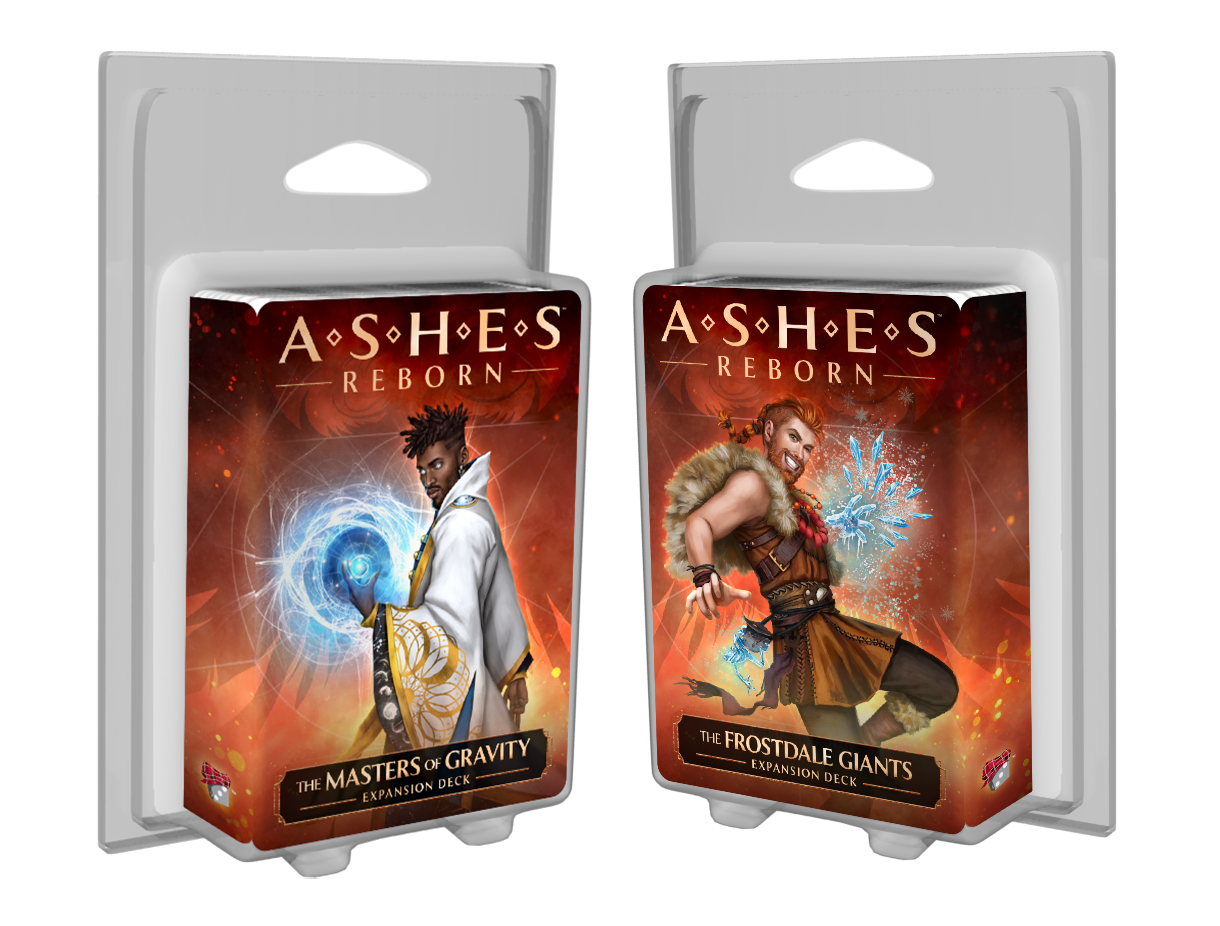
Survival of the Fittest:
While both Frostdale and Hemlock are providing a variety of strong options here, I don’t think either is particularly essential. What I said about the deck feeling mostly the same is true, and if you really want to play the dinosaurs at a minimum monetary loss, you’ll be just fine. Frostback Bear is good, but you can fill the missing slot with Law of Domination and tweak the deck to include more ally presence. You can even switch to Emperor Lion, replace Sacred Ground with Law of Domination, and move to a six-divine magic / four-natural magic dice spread. Without Polarity Mage you probably also cut Massive Growth, but you can still get over-the-top with Molten Gold. If you’re freeing up card slots, you can also grab a third Root Armor and include a couple Meteors to really create the most inhospitable environment imaginable.
By the same token, you can also easily include more expansions…
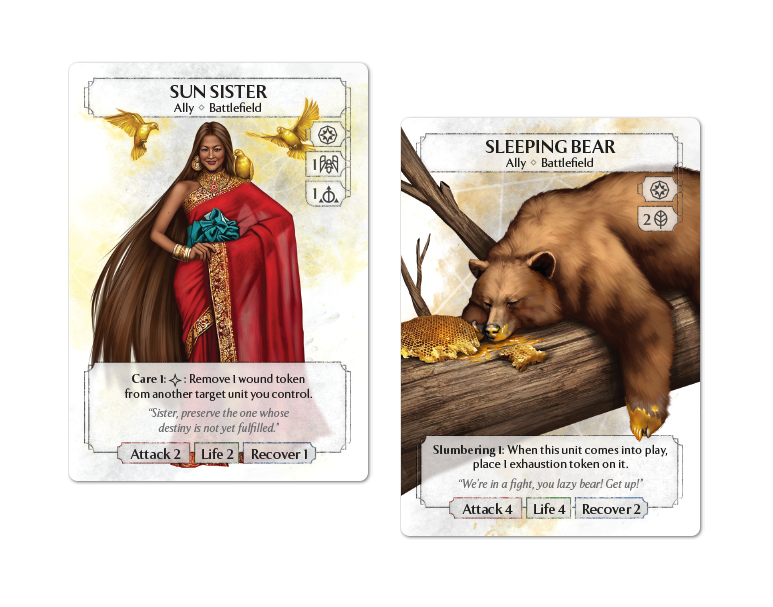
Taking it further:
Xander’s circle of friends expands far and wide, so it shouldn’t be too surprising when I say this deck was originally four expansions to include various allies. I absolutely love Sun Sister in this kind of big life, big mass damage beatdown machine. I’ve also been vocal about Sleeping Bear being an awesome slow play ally that just wrecks the board when it wakes up. Both of these allies can be especially annoying when combined with Xander’s Reincarnate, making their presence difficult to truly answer. One advantage of these kinds of allies -- either thicker or full of healing -- is they can allow you to ignore Sacred Ground in favor of Law of Domination. Your units are just so big that your opponent will almost never be able to trade upward, plus the non-preventable damage on Law of Domination can help you deal with Armored on the opponent’s side as well (like last week’s Celestial Knight). Running a full playset of Law of Domination may potentially encourage you to switch from Frostback Bears over to Biters: having unit guard is extremely helpful for keeping your more important bypass units alive, and Law of Domination guarantees they’ll still be effective as a potential offensive unit. You could even run both Frostback and Biter books, and take whichever you think you’ll need more in your first five.
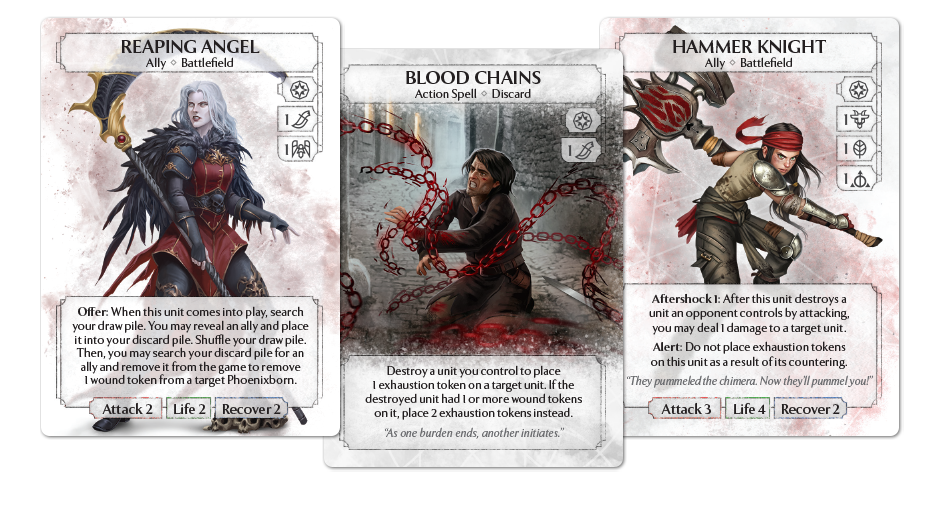
For this kind of Xander deck, I’m a big fan of a splash of ceremonial magic. Reaping Angel can be pretty disgusting with Xander’s Reincarnate since you can effectively pull any ally from your deck into your hand via the discard pile. You can also diversify your board control methods against larger threats with Blood Chains, which is easy to get max value from since it’s so easy to damage your own units. Ceremonial also gives you some meaner allies like Hammer Knight and Grave Knight, which easily rival your dinosaurs for sheer thickness and scale.
If you’re looking to get absolutely WILD, you can also go into sympathy magic and do some funky shenanigans with Memorialize; since you can always get your allies back with Reincarnate, Memorialize technically never “runs out”, and Reaping Angel always shuffles your deck whether you find a friend or not. I don’t know that I’d recommend that route, but there’s got to be at least one mad schemer out there willing to try this.
That’s all we’ve got for this article. We’re getting pretty close to the end, and who better to represent that next time than Rimea and her connection to the afterlife?
Andrew DiLullo is an animator, a game designer, and luckily also a writer. Having first discovered Ashes at the tail end of the first round of expansions in 2016, he’s been playing ever since and currently heads the Bay Area Ashes group in California. He was especially active in several community projects after Ashes was canceled the first time, and now puts his attention to Reborn as the game starts anew. He’s currently designing a board game in his spare time, and occasionally writes on his online journal: The Lighthouse Library.


